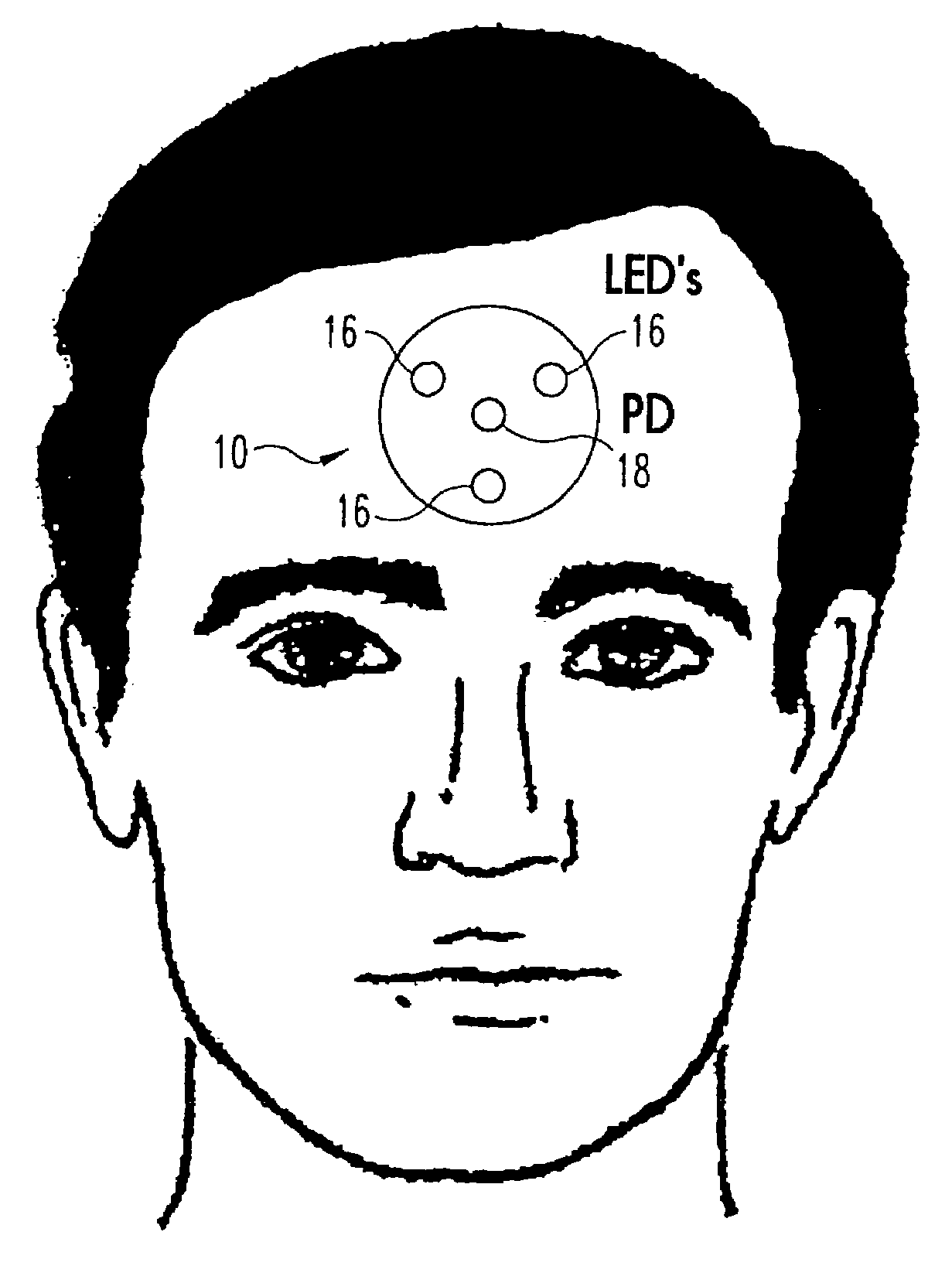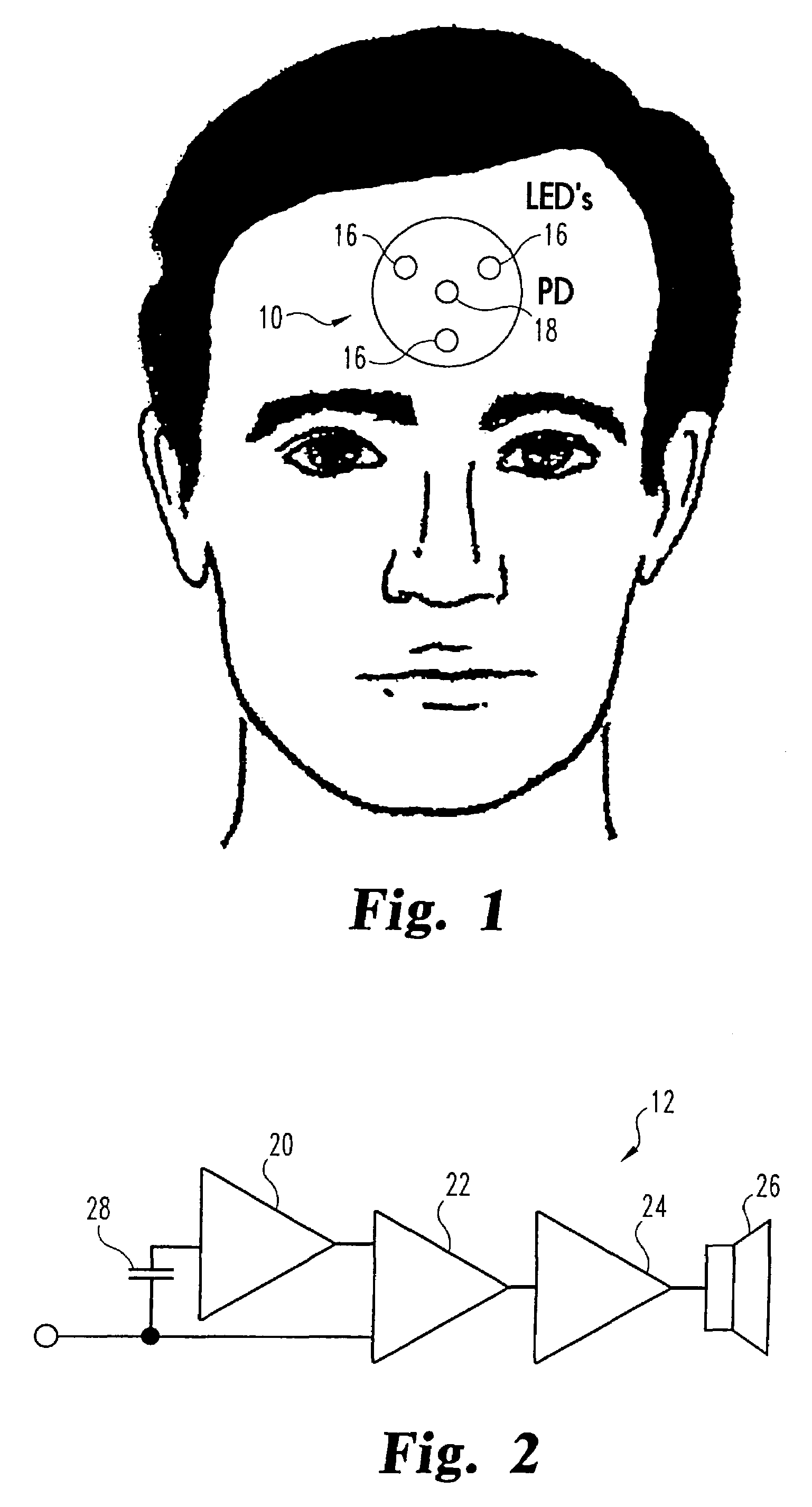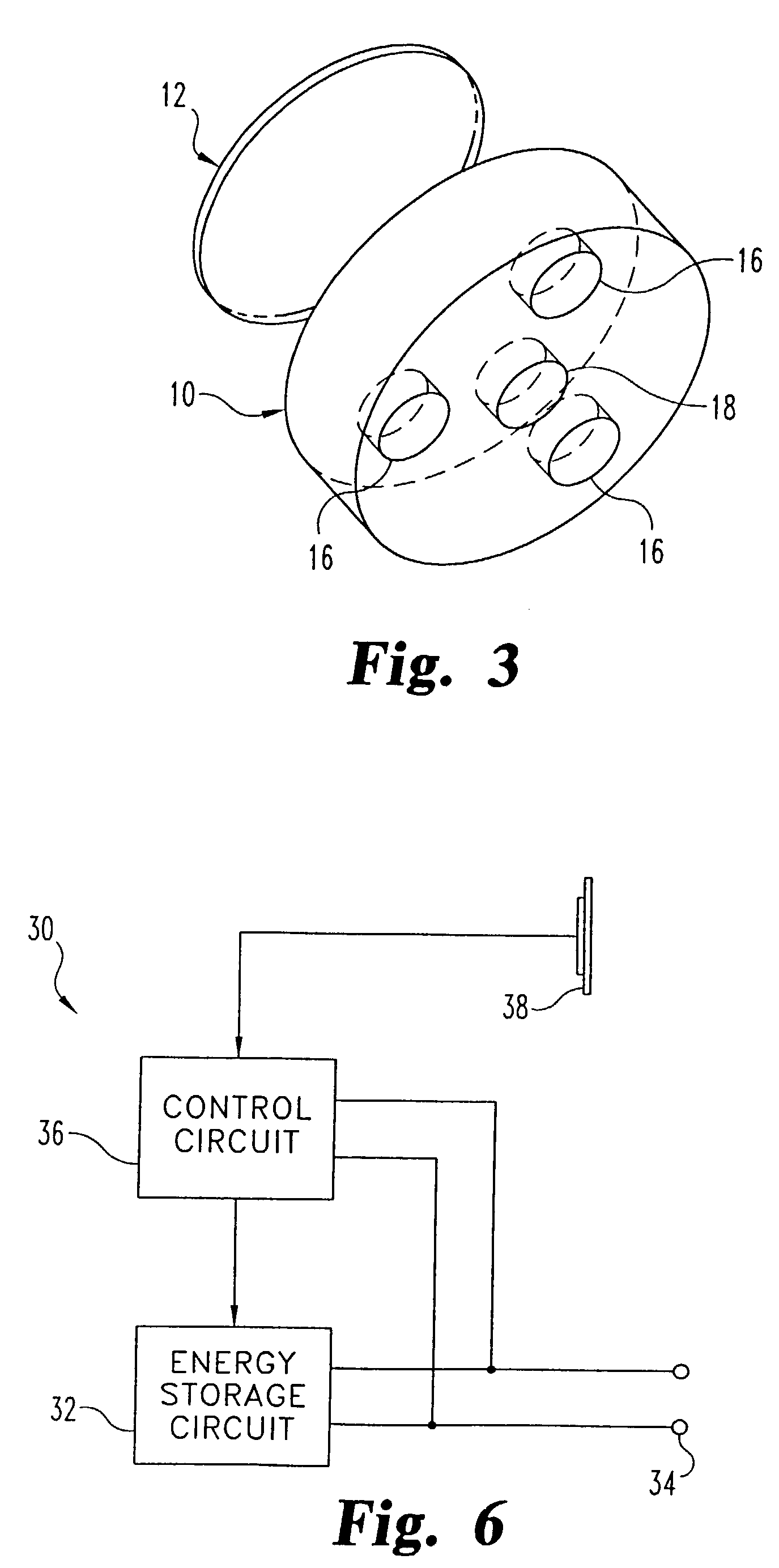Apparatus and method for noninvasively detecting the quality of cardiac pumping
a non-invasive and cardiac technology, applied in the field of cardiac pumping monitoring devices and methods, can solve the problems of brain damage, method does not give the typical human rescuer feedback fast, and aed gives no indication of the effectiveness of pumping blood
- Summary
- Abstract
- Description
- Claims
- Application Information
AI Technical Summary
Benefits of technology
Problems solved by technology
Method used
Image
Examples
Embodiment Construction
[0018]For the purpose of promoting an understanding of the principles of the invention, reference will now be made to the embodiments illustrated in the drawings and specific language will be used to describe the same. It will nevertheless be understood that no limitation of the scope of the invention is thereby intended, such alterations and further modifications in the illustrated device and such further applications of the principles of the invention as illustrated therein being contemplated as would normally occur to one skilled in the art to which the invention relates.
[0019]Referring to FIGS. 1 and 2, one embodiment of an auditory pulse monitor according to the present invention includes an optical sensor 10 connected to a circuit 12. The small optical sensor is preferably adapted for quick placement on the forehead of a subject 14 and includes one or more light-emitting diodes (LEDs) 16 that surround a photodetector 18 as shown in FIG. 1. The LEDs are preferably infrared devi...
PUM
 Login to View More
Login to View More Abstract
Description
Claims
Application Information
 Login to View More
Login to View More - R&D
- Intellectual Property
- Life Sciences
- Materials
- Tech Scout
- Unparalleled Data Quality
- Higher Quality Content
- 60% Fewer Hallucinations
Browse by: Latest US Patents, China's latest patents, Technical Efficacy Thesaurus, Application Domain, Technology Topic, Popular Technical Reports.
© 2025 PatSnap. All rights reserved.Legal|Privacy policy|Modern Slavery Act Transparency Statement|Sitemap|About US| Contact US: help@patsnap.com



